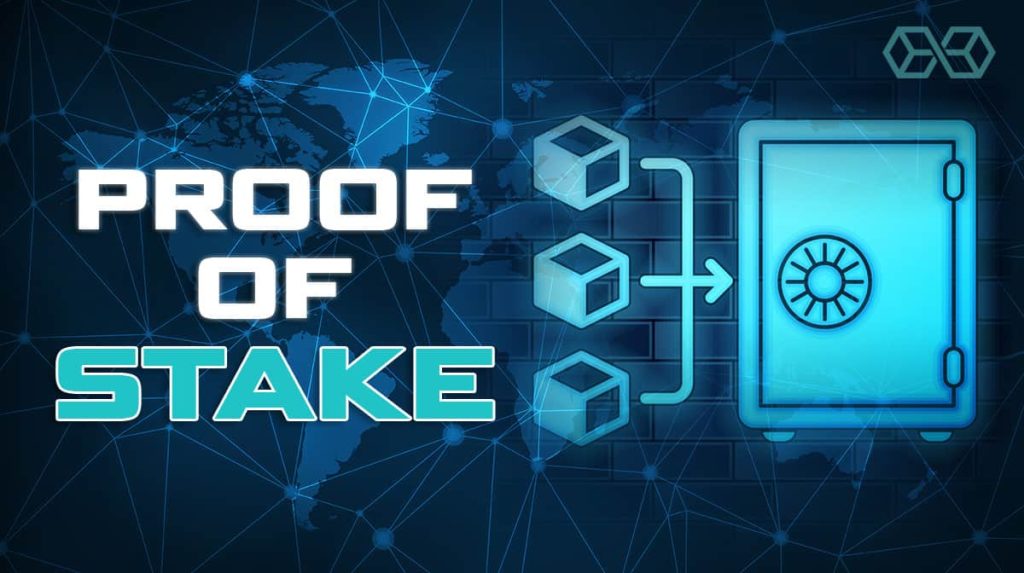The Governance Implications of Ethereum’s Transition to Proof-of-Stake (PoS)

The Governance Implications of Ethereum's Transition to Proof-of-Stake (PoS)
Introduction
As Ethereum, the world’s second-largest cryptocurrency, transitions from the energy-intensive Proof-of-Work (PoW) consensus mechanism to the more sustainable Proof-of-Stake (PoS) model, it brings forth significant governance implications. This article explores the various aspects of Ethereum’s transition to PoS and its impact on the network’s governance structure. By examining the benefits, challenges, and potential outcomes, we aim to shed light on the evolving landscape of Ethereum governance.
Understanding Proof-of-Stake (PoS)
1. What is Proof-of-Stake?
Proof-of-Stake (PoS) is a consensus mechanism used by blockchain networks to achieve agreement on the state of the ledger. Unlike Proof-of-Work (PoW), which relies on computational puzzles and energy consumption, PoS selects validators based on the number of cryptocurrency tokens they hold and are willing to “stake” as collateral.
2. How does PoS differ from Proof-of-Work?
In a PoS system, validators are chosen to create new blocks and validate transactions based on their stake, which represents their ownership and interest in the network. PoS offers several advantages over PoW, including reduced energy consumption, increased scalability, and improved security against certain types of attacks.
Ethereum’s Transition to Proof-of-Stake

1. The motivation behind the transition
Ethereum’s transition to PoS is driven by the need for sustainability and scalability. The PoW model, used by Ethereum since its inception, requires significant computational resources and energy consumption, limiting its long-term viability. PoS aims to address these concerns by shifting the consensus mechanism towards a more efficient and environmentally friendly approach.
2. The role of the Beacon Chain
The Beacon Chain, launched in December 2020, serves as the backbone of Ethereum’s PoS transition. It coordinates validators, manages consensus, and introduces the concept of shards, which divide the network’s workload to enhance scalability. The Beacon Chain lays the foundation for Ethereum 2.0, the fully realized PoS version of the network.
3. The significance of validators
Validators play a crucial role in Ethereum’s PoS model. They propose and validate blocks, secure the network, and earn rewards for their participation. Validators are required to lock a certain amount of Ether (ETH) as collateral, ensuring their commitment to the network’s integrity. The selection process aims to be fair and decentralized, encouraging wide participation.
4. Staking and the economic model of Ethereum
Staking is the process by which participants lock their ETH as collateral and contribute to the network’s security. By staking, individuals gain the opportunity to become validators and earn rewards. Staking also influences the supply and demand dynamics of ETH, potentially impacting its price and overall market conditions.
Implications for Ethereum’s Governance
1. Decentralization and power distribution
The transition to PoS has significant implications for Ethereum’s governance structure. PoS aims to decentralize power by allowing anyone with the minimum required stake to participate in block validation. This potentially leads to a more democratic governance model, as decision-making authority is distributed among a broader range of stakeholders.
2. Stakeholder influence and decision-making
As validators become key participants in the Ethereum network, they gain influence over governance decisions. The more ETH a validator holds, the greater their voting power. This shift in influence may impact the decision-making process, potentially introducing new dynamics and power balances within the Ethereum community.
3. Security and network consensus
With PoS, Ethereum’s security relies on the collective stake of validators. If a significant portion of validators act maliciously, the network’s security can be compromised. Maintaining a diverse and decentralized validator pool becomes crucial to ensure the integrity and resilience of the Ethereum network.
4. Upgrading the Ethereum protocol
The transition to PoS also opens up opportunities for upgrading the Ethereum protocol. By introducing Ethereum 2.0, developers can implement improvements and new features to enhance the network’s functionality, scalability, and user experience. The transition serves as a foundation for further innovation within the Ethereum ecosystem.
Benefits of Proof-of-Stake
1. Energy efficiency and sustainability
One of the primary advantages of PoS over PoW is its reduced energy consumption. By eliminating the need for resource-intensive mining operations, PoS contributes to a more sustainable blockchain ecosystem, aligning with global efforts towards environmental responsibility.
2. Lower barriers to entry
PoS lowers the barriers to entry for participation in the network’s consensus mechanism. Validators can join the network with a smaller investment compared to the significant hardware and electricity costs associated with PoW mining. This inclusivity encourages broader participation and diversifies the Ethereum community.
3. Enhanced scalability and transaction throughput
Scalability has been a long-standing challenge for Ethereum. PoS, along with the introduction of shard chains, enables greater scalability by processing multiple transactions in parallel. This improvement increases the network’s capacity to handle a higher volume of transactions, potentially reducing congestion and improving transaction speeds.
4. Reduced centralization risks
By shifting away from the energy-intensive PoW, Ethereum reduces the risks associated with mining centralization. PoS encourages wider participation and reduces the dominance of mining pools or entities with significant computational resources. This decentralization contributes to a more resilient and robust network.
Challenges and Risks
1. Economic and financial considerations
The transition to PoS involves various economic considerations. Validators must lock their ETH as collateral, which poses risks if the price of ETH significantly declines. Economic models need to balance incentives to encourage participation while ensuring the economic stability of the network.
2. Potential centralization of wealth
While PoS aims to decentralize power, it can potentially lead to the centralization of wealth. Validators with significant stakes accumulate more rewards, further increasing their wealth and influence. Ensuring a fair distribution of wealth and preventing excessive centralization remains a challenge for Ethereum’s governance.
3. Sybil attacks and stake grinding
PoS networks face the risk of Sybil attacks, where malicious actors create multiple identities to gain a disproportionate influence over the consensus process. Additionally, validators may engage in stake grinding, attempting to manipulate the selection process to their advantage. Implementing robust mechanisms to mitigate these risks is crucial.
4. Ensuring network security and stability
The security and stability of the Ethereum network rely on the active participation of honest and reliable validators. PoS introduces new challenges, such as potential attacks on individual validators or collusion among a group of validators. Ongoing research and the development of security protocols are necessary to maintain the network’s integrity.
Potential Outcomes
1. Enhanced community participation
The transition to PoS offers an opportunity for enhanced community participation in Ethereum’s governance. With lower barriers to entry and the ability to earn rewards through staking, a broader range of stakeholders can actively contribute to decision-making processes, fostering a more inclusive and vibrant community.
2. Evolution of governance models
As Ethereum embraces PoS, its governance models are likely to evolve. The community may explore new mechanisms for voting, consensus, and protocol upgrades. Experimentation with on-chain governance, quadratic voting, or decentralized autonomous organizations (DAOs) could reshape the way decisions are made within the Ethereum ecosystem.
3. Increased network resilience
PoS aims to enhance the security and resilience of the Ethereum network. By incentivizing validators to act honestly and responsibly, the network becomes more resistant to attacks and more reliable overall. This increased resilience strengthens Ethereum’s position as a robust and trustworthy platform for decentralized applications.
4. Broader adoption and ecosystem growth
The transition to PoS has the potential to attract new users and developers to the Ethereum ecosystem. The improved scalability, energy efficiency, and reduced barriers to entry can drive innovation and foster the creation of diverse decentralized applications. This growth may further solidify Ethereum’s position as a leading blockchain platform.
On-chain Governance Mechanisms
Decentralized Decision-making through Token Voting and DAOs
On-chain governance mechanisms offer a decentralized approach to decision-making within the Ethereum ecosystem. These mechanisms enable token holders to actively participate in shaping the network’s future. One popular method is token-based voting, where stakeholders can vote on proposals using their tokens as voting power. This democratic process ensures that decisions reflect the collective will of the community. Additionally, decentralized autonomous organizations (DAOs) take this concept further by allowing community members to directly participate in governance activities. DAOs operate on smart contracts and enable stakeholders to vote on proposals, allocate funds, and make collective decisions. The implementation of on-chain governance mechanisms fosters transparency, inclusivity, and community engagement, creating a more robust governance structure for Ethereum.
Economic Incentives and Tokenomics
Motivating Stakeholders through Rewards and Collateral
Economic incentives and tokenomics play a crucial role in Ethereum’s transition to Proof-of-Stake (PoS). Validators and stakers are motivated to actively participate in the network’s consensus mechanism by earning rewards. In PoS, validators are required to lock a certain amount of ETH as collateral. By doing so, they contribute to the security and integrity of the network. Validators who behave honestly and fulfill their responsibilities earn rewards, while those who act maliciously risk losing their staked funds. This economic model encourages stakeholders to align their interests with the network’s success, promoting active participation and securing the Ethereum ecosystem. However, economic considerations must carefully balance incentives to maintain a stable and sustainable network while ensuring a fair distribution of rewards.
Governance and Protocol Upgrades
Evolving Ethereum through Decentralized Decision-making
Governance and protocol upgrades are critical components of Ethereum’s evolution. The network’s governance structure determines how decisions regarding upgrades and improvements are made. Ethereum Improvement Proposals (EIPs) serve as a means for proposing changes to the protocol. The Ethereum community, consisting of developers, miners, investors, and users, evaluates and discusses these proposals. Ultimately, decisions on whether to implement EIPs are made through consensus, often involving community voting. This decentralized decision-making process ensures that changes to the Ethereum protocol are driven by the collective will of the community, promoting a more inclusive and democratic governance model. The continuous evolution of Ethereum’s protocol through governance and upgrades is essential for staying at the forefront of blockchain technology.
Ethereum Improvement Proposals (EIPs)
Proposals for Advancing the Ethereum Ecosystem
Ethereum Improvement Proposals (EIPs) are instrumental in shaping the Ethereum ecosystem. EIPs serve as a formal process for proposing and discussing improvements to the Ethereum protocol. They enable developers, community members, and stakeholders to contribute their ideas, suggestions, and technical specifications. EIPs undergo a review process, involving rigorous evaluation and feedback from the community. This collaborative approach ensures that proposed changes are thoroughly scrutinized and aligned with the network’s goals. Successful EIPs are implemented, enhancing the functionality, security, and scalability of the Ethereum network. The active engagement of the community in the EIP process reinforces the decentralized nature of Ethereum’s governance, fostering innovation and progress.
Community Governance and Social Coordination
Engaging the Ethereum Community for Collective Decision-making
Community governance and social coordination are vital aspects of Ethereum’s governance model. The Ethereum community consists of diverse stakeholders, including developers, users, miners, and investors, each with their own perspectives and interests. Effective governance requires open dialogue, collaboration, and coordination among these various stakeholders. Online forums, social media channels, and conferences play a significant role in facilitating discussions, sharing ideas, and building consensus within the Ethereum community. Social coordination efforts, such as hackathons and meetups, bring community members together to exchange knowledge, foster relationships, and collaborate on projects. By promoting community engagement and inclusivity, Ethereum’s governance model encourages a collective approach to decision-making, ensuring the network’s continued growth and success.
Conclusion
The transition from Proof-of-Work to Proof-of-Stake marks a significant milestone for Ethereum. Beyond its environmental benefits, PoS brings about fundamental changes to Ethereum’s governance structure, decentralization efforts, and network security. While challenges and risks persist, the potential outcomes include a more inclusive and participatory community, innovative governance models, increased network resilience, and continued ecosystem growth. As Ethereum continues to evolve, its transition to PoS paves the way for a sustainable and scalable future.








